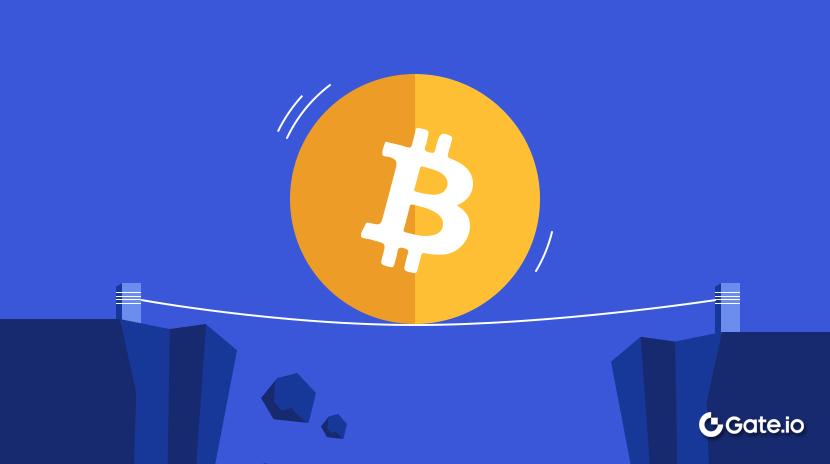Vue d'ensemble du marché des stratégies de rendement des jetons stables
Transférer le titre original’Stablecoin Earnings Guide'
Le marché crypto récent a été terne, et des rendements conservateurs et stables sont une fois de plus devenus une demande du marché. Par conséquent, sur la base de mon expérience en matière d'investissement ces dernières années et des résultats de recherche concentrés sur le domaine des stablecoins fin de l'année dernière, j'aimerais discuter du sujet classique mais toujours actuel des rendements des stablecoins.
Les catégories actuelles de jetons stables sur le marché de la cryptomonnaie tombent principalement dans les catégories suivantes :
- USDT: Conformément à certaines conditions mais avec la plus grande part de marché. largement utilisé dans divers scénarios (paires d'échange de crypto-monnaies sur les bourses, paie pour les entreprises liées aux crypto-monnaies, commerce réel et paiements hors ligne). Les utilisateurs comptent sur l'échelle de Tether et sa capacité perçue à soutenir le rachat.
- Stablecoins adossés à des devises fiat et conformes au ratio 1:1. L'USDC est pris en charge sur la plupart des chaînes et applications, ce qui en fait un véritable dollar on-chain. D'autres comme le USD de PayPal et le USD de BlackRock ont des cas d'utilisation limités.
- Stablecoins surcollatéralisés : Principalement DAI de MakerDAO, qui a évolué en USDS sous Sky Protocol. LUSD de Liquity est également un concurrent, offrant des prêts sans intérêt avec un faible ratio de collatéral de 110 % comme innovation clé.
- Stablecoins adossés à des actifs synthétiques : Dans ce cycle, le USDe d'Ethena est l'exemple le plus notable. Son modèle de rendement - arbitrer les taux de financement - sera un point central plus tard dans cet article.
- Les jetons stables adossés aux bons du Trésor américain via les projets RWA : USD0 d'Usual et USDY d'Ondo sont les plus remarquables de ce cycle. USD0++ d'Usual fournit de manière innovante de la liquidité pour les bons du Trésor américain, similaire à ce que fait Lido pour le jalonnement d'ETH.
- Stablecoins algorithmiques : Cette approche a été largement discréditée après l'effondrement de l'UST de Terra. Luna manquait de valeur intrinsèque et a connu une spirale de la mort de volatilité et de ventes massives. FRAX, qui combine des modèles algorithmiques et sur-collatéralisés, voit encore une certaine utilisation, mais la plupart des stablecoins algorithmiques ont perdu en pertinence.
- Stablecoins non libellés en USD : les stablecoins libellés en euros (comme l'EURC de Circle et l'EURT de Tether) et d'autres stablecoins indexés sur des monnaies fiduciaires (BRZ, ZCHF, HKDR, etc.) ont actuellement peu d'impact sur le marché dominé par le dollar américain. Leur seul chemin viable réside dans les systèmes de paiement réglementés, et non dans l'écosystème crypto natif.

Classement de la capitalisation boursière des jetons stables source : https://defillama.com/stablecoins
Actuellement, les principales catégories de génération de rendement de jeton stable comprennent les suivantes. Cet article analysera chaque type plus en détail:

Modèles de rendement de jetons stables
1. Prêt et emprunt de jeton stableé:
Le prêt est le modèle de rendement financier le plus traditionnel. Les rendements proviennent essentiellement des intérêts payés par les emprunteurs. Les considérations importantes incluent la sécurité de la plateforme ou du protocole, le risque de défaut des emprunteurs et la stabilité des revenus. Les produits de prêt actuels incluent :
- Plateformes CeFi : Principalement des produits d'épargne flexibles des principales bourses (Binance, Coinbase, OKX, Bybit).
- Principaux protocoles DeFi : Aave, Sky Protocol (rebrand de MakerDAO), Morpho Blue, etc.
Ces principales bourses et protocoles DeFi se sont avérés sécurisés à travers divers cycles de marché. En période de hausse, la demande d'emprunt augmente et les rendements des épargnes flexibles (par exemple, USDT, USDC) peuvent atteindre plus de 20 %. En période calme, les rendements tombent généralement autour de 2 à 4 %. Par conséquent, les taux d'intérêt des prêts flexibles sont un indicateur direct de l'activité du marché. Les prêts à intérêt fixe, bien que moins liquides, offrent souvent des rendements plus élevés pendant les périodes calmes, bien qu'ils ne puissent pas capturer les pics lors des hausses.
En outre, il existe quelques micro-innovations sur le marché global du prêt stablecoin, notamment :
- Les protocoles de prêt DeFi à taux fixe : Pendle se démarque dans ce cycle. Il a commencé par des prêts à taux fixe et a évolué vers une tokenisation des rendements. D'autres projets précoces comme Notional Finance et Element Finance n'ont pas décollé mais avaient des concepts de conception perspicaces.
- Modèles de tranchage des taux d'intérêt et de subordination dans le prêt.
- Mécanismes de prêt à effet de levier dans DeFi.
- Plateformes de prêt DeFi institutionnelles, telles que Maple Finance, où son produit « Sirop » obtient des rendements à partir d'emprunts institutionnels.
- Prêts basés sur les RWA, où les rendements des prêts du monde réel sont intégrés dans la chaîne - par exemple, les produits de financement de la chaîne d'approvisionnement on-chain de Huma Finance.
En bref, le prêt reste le modèle de rendement le plus direct et le plus intensif en capital dans l'espace des stablecoins, et devrait probablement continuer à dominer en tant que grande voie de rendement.
2. Rendements de l'agriculture de rendement :
Représentée par Curve, les rendements de l'agriculture de rendement proviennent des frais de trading AMM partagés avec les fournisseurs de liquidité (LP) et les récompenses en jetons. En tant que norme de référence pour les plateformes DEX stablecoin, Curve joue un rôle essentiel. Être répertorié dans les Curve Pools est considéré comme un indicateur majeur pour l'adoption d'un nouveau stablecoin dans l'industrie. L'avantage de l'agriculture de rendement de Curve réside dans sa sécurité très élevée, mais son inconvénient est le rendement relativement faible (0 à 2 %), qui manque d'attrait. Pour les fonds plus petits ou à court terme, participer à l'exploitation minière de liquidité de Curve peut même ne pas rapporter suffisamment pour couvrir les frais de gaz de transaction.
Les paires de trading de stablecoins d'Uniswap sont confrontées à des problèmes similaires. Pour les paires non stables sur Uniswap, la liquidité agricole peut entraîner des pertes en raison de la perte impermanente. Pendant ce temps, les pools de stablecoins sur de plus petites plates-formes DEX, bien qu'offrant des rendements plus élevés, présentent des risques de rug pull, ce qui viole la nature prudente et stable requise pour les stratégies financières axées sur les stablecoins. Actuellement, nous observons que les pools de stablecoins DeFi reposent toujours fortement sur des modèles de prêt. Même le 3Pool emblématique de Curve (DAI, USDT, USDC) ne figure que parmi les 20 premiers en termes de TVL, ce qui indique que le yield farming n'est pas l'approche dominante pour les rendements des stablecoins.

Classement du TVL du pool de stablecoin source : https://defillama.com/yields?token=ALL_USD_STABLES
3. Retours d'arbitrage neutres sur le marché :
La stratégie d'arbitrage neutre par rapport au marché est largement utilisée depuis longtemps dans les institutions de trading professionnelles. En détenant simultanément des positions longues et courtes, ces stratégies visent à réduire l'exposition nette au marché à presque zéro. Dans le contexte des crypto-monnaies, les principaux types incluent :
- Arbitrage du taux de financement : les contrats à terme perpétuels n'ont pas de date d'expiration. Leurs prix sont maintenus en ligne avec les prix au comptant via un mécanisme de taux de financement. Ce taux est payé périodiquement et réduit les écarts à court terme entre les prix au comptant et les prix perpétuels.
- Lorsque le prix perpétuel est supérieur au spot (prime), les longs paient les shorts, et le taux de financement est positif.
- Lorsque le prix perpétuel est inférieur au spot (remise), les shorts paient les longs, et le taux de financement est négatif.
- Les données historiques montrent que les taux de financement positifs se produisent plus fréquemment que les taux négatifs. Par conséquent, la stratégie typique est d'acheter au comptant et de vendre à découvert des contrats perpétuels, en gagnant le financement positif payé par les positions longues.

Les statistiques historiques du taux de financement d'Ethena confirment que les taux de financement positifs dominent avec le temps.
- Arbitrage Cash-and-Carry : Cet arbitrage exploite les différences de prix entre le marché au comptant et les marchés à terme. Les traders couvrent les positions pour verrouiller les bénéfices, en se basant sur la base - la différence entre les prix à terme et au comptant. Cette stratégie est généralement utilisée dans les marchés de contango (prix à terme > au comptant) ou de backwardation (prix à terme < au comptant). Elle est plus adaptée aux investisseurs disposant d'un capital important, patients et confiants dans la convergence de la base, reflétant souvent une mentalité financière traditionnelle.

- Arbitrage inter-bourses : Cela consiste à exploiter les écarts de prix entre différentes bourses en construisant des positions neutres. C'était autrefois une méthode d'arbitrage courante sur les premiers marchés de cryptomonnaies. Cependant, les écarts de prix pour les paires courantes sur les principales bourses ont largement disparu. Désormais, cette stratégie nécessite des robots automatisés et est mieux adaptée aux marchés volatils ou aux jetons de petite capitalisation. La barrière à l'entrée pour les utilisateurs particuliers est élevée, des outils comme Hummingbot étant souvent utilisés.
- D'autres formes telles que l'arbitrage triangulaire, l'arbitrage entre chaînes et l'arbitrage entre pools existent mais ne seront pas élaborées dans cet article.
Les stratégies d'arbitrage neutres par rapport au marché, en raison de leur grande professionnalisme, sont principalement limitées aux investisseurs professionnels. Cependant, dans le cycle actuel, Ethena a introduit l'arbitrage des taux de financement sur chaîne, le rendant accessible aux utilisateurs de détail réguliers.
Dans Ethena, les utilisateurs déposent du stETH dans le protocole et reçoivent en retour des jetons USDe stables. Simultanément, le protocole ouvre des positions courtes équivalentes sur des échanges centralisés, générant un taux de financement positif. Selon les données historiques, les taux de financement sont positifs plus de 80% du temps. Pendant les périodes de financement négatif, Ethena couvre le déficit à l'aide de fonds de réserve. Le protocole Ethena alloue 65% des revenus du protocole pour couvrir les taux de financement. Les 35% restants proviennent du jalonnement Ethereum, des revenus de prêt sur chaîne et CEX. Les actifs des utilisateurs sont déposés auprès d'un fournisseur tiers de règlement hors bourse (OES) avec des rapports d'audit mensuels, isolant efficacement les risques des plateformes d'échange.

Diagramme de flux du protocole Ethena
Au-delà des risques tels que les défaillances des échanges centralisés, les incidents de garde, les vulnérabilités des contrats intelligents ou le désancrage des actifs collatéraux, qui sont généralement hors du contrôle de l’équipe, le risque principal réside dans le scénario de taux de financement négatifs prolongés qui dépassent la couverture des réserves du protocole. Sur la base des données historiques sur les baisses, ce scénario semble peu probable. Même si cela se produit, cela impliquerait que le modèle d’arbitrage des taux de financement largement adopté dans l’ensemble de l’industrie n’est plus valide. Tant que l’équipe d’Ethena agit de manière responsable, il est peu probable que le protocole subisse une « spirale de la mort » comme le stablecoin algorithmique de Terra. Au lieu de cela, un déclin progressif des rendements élevés subventionnés par les jetons vers des rendements plus normalisés au niveau de l’arbitrage est le scénario le plus probable.
En même temps, il convient de reconnaître que Ethena offre une transparence exceptionnelle. Sur son site officiel, les utilisateurs peuvent clairement consulter les rendements historiques, les taux de financement, les positions sur les bourses et les rapports d'audit mensuels des dépositaires - un niveau de divulgation qui surpasse les produits similaires d'arbitrage des taux de financement sur le marché.
Outre le modèle d'arbitrage des taux de financement d'Ethena, l'échange Pionex propose également un produit d'investissement en stablecoin basé sur l'arbitrage à terme. Malheureusement, en dehors d'Ethena, il existe actuellement peu de produits d'arbitrage neutres par rapport au marché avec de faibles barrières à l'entrée disponibles pour les investisseurs particuliers.
4. Projets de Bons du Trésor américain RWA
Le cycle de hausse des taux de la Réserve fédérale de 2022 à 2023 a poussé les taux d'intérêt du dollar américain au-dessus de 5%. Bien que la politique se soit depuis orientée vers des baisses de taux progressives, un rendement de plus de 4% sur les actifs libellés en dollars représente toujours un rare équilibre entre une sécurité élevée et des rendements décents dans la finance traditionnelle. Les entreprises RWA sont soumises à des exigences de conformité élevées et sont intensives sur le plan opérationnel. Parmi les différents types d'actifs, les bons du Trésor américain - en tant qu'instruments standardisés et hautement liquides - sont l'un des rares actifs sous-jacents viables pour une logique RWA solide.

Tendance de croissance des RWA du Trésor américain: Source de données: https://app.rwa.xyz/treasuries
Ondo, qui utilise les bons du Trésor américain comme actifs sous-jacents, propose USDY aux utilisateurs non-américains de détail général et OUSG aux investisseurs institutionnels qualifiés des États-Unis, offrant tous les deux un rendement de 4,25 %. Il domine le secteur RWA en termes de support multi-chaîne et d'intégration dans l'écosystème, bien qu'il soit légèrement en deçà en matière de conformité réglementaire par rapport au FOBXX de Franklin Templeton et au BUIDL de BlackRock. Pendant ce temps, le protocole émergent Usual a gagné du terrain au cours de ce cycle en créant USD0 sur un panier de bons du Trésor américain et en introduisant USD0++, un jeton liquide similaire à la solution de Lido pour le jalonnement d'Ethereum, qui apporte de la liquidité aux bons du Trésor verrouillés sur 4 ans et permet aux utilisateurs de gagner des rendements supplémentaires grâce au minage de liquidité en stablecoins ou aux pools de prêt.

Diagramme de rendement USD0 et USD0++ du protocole habituel
Il est important de noter que la plupart des projets RWA du Trésor américain offrent des rendements stables autour de 4%. Les rendements plus élevés dans les pools de stablecoins d'Usual sont largement motivés par des incitations spéculatives telles que les subventions en jetons Usual, les récompenses Pills (Point) et les bonus de minage de liquidité ne sont pas durables à long terme. En tant que projet RWA avec l'écosystème DeFi le plus intégré, Usual fait toujours face au risque d'une baisse progressive des rendements, bien que pas au point d'un effondrement systémique.
Bien que le début de 2025 ait vu un événement de débouclage et de vente déclenché par des changements dans le mécanisme de rachat de l'USD0++, la cause première était un désaccord entre sa nature semblable à une obligation et les attentes du marché, exacerbé par des erreurs de gouvernance. Néanmoins, la conception du mécanisme de liquidité de l'USD0++ reste un modèle innovant digne d'être émulé pour d'autres projets RWA adossés au Trésor américain.

5. Produits structurés basés sur des options
Actuellement, les produits structurés et les stratégies de change à double devise populaires sur les principales bourses centralisées sont largement dérivés des stratégies de trading d'options, en particulier l'approche "vente d'options pour gagner des primes", à savoir les stratégies de vente de put ou de vente d'appel. Pour les investissements en stablecoin libellés en USD, la stratégie de vente de put est plus courante. Les rendements proviennent de la collecte des primes payées par les acheteurs d'options, ce qui signifie que l'investisseur gagne un revenu stable libellé en USDT ou acquiert éventuellement du BTC ou de l'ETH à un prix cible plus bas.
En pratique, les stratégies de vente d’options sont mieux adaptées aux marchés latéraux ou à fourchette : un prix d’exercice de vente s’aligne généralement sur l’extrémité inférieure de la fourchette de prix, tandis qu’un prix d’achat sur vente s’aligne sur l’extrémité supérieure. Dans un marché haussier, les stratégies de vente et de vente risquent de manquer des opportunités de hausse, ce qui rend l’achat d’options d’achat plus appropriées. Dans un marché baissier, les stratégies de vente et de vente peuvent entraîner des pertes durables, essentiellement en « achetant trop tôt » alors que le marché continue de baisser. Pour les débutants, il est facile de tomber dans le piège de rechercher des « rendements élevés » à court terme tout en sous-estimant l’exposition à des baisses de prix importantes. Cependant, une fixation trop prudente d’un prix d’exercice (trop bas) peut entraîner des primes qui ne sont pas assez attrayantes. Sur la base des années d’expérience de l’auteur dans le trading d’options, le moment optimal pour utiliser des stratégies de vente est lorsque la peur du marché est élevée, fixant un prix cible bas pour obtenir des primes plus élevées, tandis que dans les marchés haussiers, les taux de prêt flexibles sur les bourses ont tendance à être plus lucratifs.

Récemment populaire sur des plateformes telles que OKX, la stratégie protégée en capital Fin requin combine un écart d'appel baissier (vente d'un appel pour gagner des primes + achat d'un appel à une grève plus élevée pour limiter le potentiel de hausse) et un écart de put haussier (vente d'un put pour gagner des primes + achat d'un put à une grève plus basse pour limiter le potentiel de baisse). Cette configuration d'option structurée permet à l'investisseur de gagner des primes dans une fourchette de prix définie, tandis que les pertes et les gains en dehors de cette fourchette sont couverts les uns contre les autres, ce qui se traduit par aucun profit ou perte supplémentaire. Il s'agit d'une stratégie d'investissement basée sur USDT adaptée aux utilisateurs qui privilégient la préservation du capital par rapport à la maximisation des revenus de primes ou des rendements en crypto-monnaies.

Diagramme du produit structuré OKX Shark Fin
L'infrastructure des options sur chaîne est encore en phase de développement précoce. Dans le cycle précédent, Ribbon Finance était un protocole de vault d'options de premier plan. D'autres plateformes comme Opyn et Lyra Finance permettaient également l'exécution manuelle de stratégies de génération de primes, mais leur popularité a diminué dans le cycle actuel.
6. Tokenisation des rendements
Un projet remarquable dans ce cycle, le protocole Pendle a commencé avec le prêt à taux fixe en 2020 et a évolué vers une tokenisation complète du rendement d'ici 2024. Il permet aux utilisateurs de diviser les actifs producteurs de rendement en différentes composantes, leur permettant de verrouiller des rendements fixes, de spéculer sur le rendement futur ou de se couvrir contre la volatilité du rendement.
- Les jetons de rendement standardisés (SY) peuvent être divisés en :
- PT (Principal Token) : Représente le principal de l'actif sous-jacent et peut être échangé 1:1 à l'échéance.
- YT (Yield Token) : Représente la partie du rendement futur, qui décroît avec le temps et devient sans valeur à maturité.
Pendle prend en charge plusieurs stratégies de trading :
- Revenu fixe: Conserver PT jusqu'à l'échéance pour garantir un rendement fixe, adapté aux investisseurs prudents.
- Spéculation sur les rendements : Acheter YT pour parier sur la hausse des rendements futurs, idéal pour les utilisateurs tolérants au risque.
- Couverture du risque : Vendre YT pour verrouiller les rendements actuels et se protéger contre les baisses du marché.
- Fourniture de liquidité : Les utilisateurs peuvent fournir des PT et des YT dans des pools de liquidité pour gagner des frais de transaction et des récompenses en jetons PENDLE.
Les pools de stablecoins de Pendle offrent actuellement des rendements globaux attrayants en combinant les rendements des actifs de base avec les gains spéculatifs YT, les frais LP, les incitations en jetons Pendle et les récompenses basées sur des points. Cependant, un inconvénient est que la plupart des pools à haut rendement sont à court ou moyen terme, nécessitant des actions fréquentes sur la chaîne pour faire tourner les positions, contrairement aux protocoles de mise en jeu ou de prêt qui sont plus "définir et oublier".
7. Produits de rendement de stablecoin de style panier
Ether.Fi, un protocole de premier plan dans l'espace du repos liquide, a proactivement embrassé la transformation du produit alors que le secteur du repos entrait dans une phase de saturation et de tendance à la baisse. Depuis lors, il s'est étendu à une large gamme de produits générateurs de rendement impliquant BTC, ETH et des stablecoins, maintenant sa position de leader dans l'écosystème DeFi.
Dans son pool Market-Neutral USD, Ether.Fi propose aux utilisateurs un panier de stratégies de rendement de stablecoin via un format de fonds géré activement. Il s'agit notamment de revenus de prêt (Syrup, Morpho, Aave), de minage de liquidité (Curve), d'arbitrage des taux de financement (Ethena) et de tokenisation du rendement (Pendle). Cette structure diversifiée est un moyen efficace de générer des rendements élevés tout en atténuant les risques, notamment pour les utilisateurs recherchant un revenu stable sur la chaîne, gérant un capital plus petit et préférant des options d'investissement à faible entretien.

Allocation d'actifs neutre sur le marché en USD d'Ether.Fi

Accord de participation neutre au marché Ether.Fi en USD
8. Rendements de jalonnement de stablecoin
Alors que les stablecoins comme DAI manquent des propriétés de mise en jeu inhérentes aux jetons PoS tels que ETH, le réseau AO, lancé par l'équipe Arweave, a introduit un modèle innovant. Il prend en charge la mise en jeu on-chain de stETH et DAI dans le cadre de sa distribution de jetons Fair Launch. Parmi eux, la mise en jeu de DAI offre la plus grande efficacité en capital pour gagner des récompenses en jetons AO. Ce modèle représente une forme alternative de rendement des stablecoins, permettant aux utilisateurs de gagner des récompenses AO en plus de détenir des DAI sécurisés - une stratégie à haut risque et haut rendement. Le principal risque réside dans l'incertitude du développement du réseau AO et de la volatilité de son prix token.

En conclusion, cet article résume les principaux modèles de rendement des stablecoins actuellement disponibles sur le marché crypto. Alors que les stablecoins font partie des actifs les plus familiers pour les participants au marché crypto, ils sont souvent négligés dans la stratégie de portefeuille. Une compréhension claire de leurs mécanismes de rendement et une allocation appropriée peuvent aider à construire une base financière solide, permettant aux participants du marché de mieux naviguer dans les incertitudes du paysage crypto.
Avertissement:
Cet article est reproduit à partir de [ JacobZhao]. Transmettre le titre original'Guide des gains en jetons stables'. Les droits d'auteur appartiennent à l'auteur original [JacobZhao], si vous avez des objections à la reproduction, veuillez contacter le Porte Apprendrel'équipe, et l'équipe s'en chargera dès que possible selon les procédures pertinentes.
Avertissement: Les points de vue et opinions exprimés dans cet article ne représentent que les points de vue personnels de l'auteur et ne constituent pas un conseil en investissement.
D'autres versions linguistiques de l'article sont traduites par l'équipe Gate Learn et ne sont pas mentionnées dans Gate.com, l'article traduit ne peut être reproduit, distribué ou plagié.
Articles Connexes

Guide de prévention des arnaques Airdrop

Qu’est-ce que l’analyse technique ?

Qu'est-ce que Solscan et comment l'utiliser ? (Mise à jour 2025)

Qu'est-ce que Tronscan et comment pouvez-vous l'utiliser en 2025?

Risques dont vous devez être conscient lorsque vous négociez des crypto-monnaies


